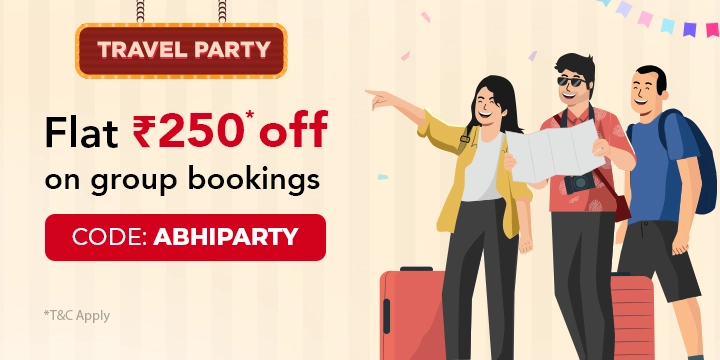Table of Contents
ToggleHow to Overcome Panic Attacks While Traveling
Traveling can be an exciting and enriching experience, but for those who suffer from panic attacks, it can also be a source of anxiety. Panic attacks can be overwhelming and debilitating, but with the right strategies, you can manage and even overcome them. Here are some tips to help you overcome panic attacks while traveling:
Also Read: Tips to Overcome Travel Anxiety
Understanding Panic Attacks
- Know the Symptoms: Panic attacks can manifest as sudden feelings of intense fear or discomfort, sweating, trembling, shortness of breath, chest pain, nausea, dizziness, and a sense of unreality.
- Recognize Triggers: Identify what triggers your panic attacks. Common triggers include crowded places, unfamiliar surroundings, and long journeys.
Preparing for Travel
- Plan Ahead: Research your destination to familiarize yourself with the surroundings and plan your itinerary to avoid triggers as much as possible.
- Pack Comfort Items: Bring items that provide comfort, such as a favorite blanket, soothing music, or essential oils.
Managing Panic Attacks While Traveling
- Practice Relaxation Techniques: Deep breathing, meditation, and mindfulness can help calm your mind and body during a panic attack.
- Use Distraction Techniques: Focus on a specific object or task to divert your attention from the panic attack.
- Progressive Muscle Relaxation: Tense and then relax each muscle group in your body to release tension and reduce anxiety.
- Mindful Observation: Engage your senses by observing your surroundings in detail, noting colors, shapes, sounds, and textures.
Seeking Support
- Travel with a Companion: Having someone you trust with you can provide reassurance and support.
- Use Technology: Consider using apps for guided meditation, relaxation, or stress management.
- Stay Connected: Keep in touch with loved ones through phone calls or messages to alleviate feelings of loneliness or isolation.
Coping Strategies After a Panic Attack
- Practice Self-Compassion: Be kind to yourself and acknowledge that panic attacks are not your fault.
- Reflect and Learn: Identify triggers and coping strategies that were helpful or unhelpful to improve your future experiences.
- Seek Professional Help: If panic attacks persist, consider seeking help from a mental health professional for therapy or medication.
How to Deal with Panic attack on Vacation
Dealing with a panic attack while on vacation can be particularly challenging, as it can disrupt your plans and leave you feeling overwhelmed. However, there are steps you can take to manage and reduce the impact of a panic attack while traveling. Here’s how:
Before Your Trip
- Plan Ahead: Research your destination to understand the local environment and identify potential triggers. Plan your itinerary to include activities and locations that are comfortable for you.
- Pack Comfort Items: Bring items that help you relax, such as a favorite book, music, or essential oils. Familiar items can provide a sense of comfort and security.
- Stay Connected: Inform a trusted friend or family member about your travel plans and how they can support you in case of a panic attack. Keep their contact information handy.
During Your Trip
- Practice Relaxation Techniques: When you feel a panic attack coming on, try deep breathing, meditation, or mindfulness exercises to calm your mind and body.
- Find a Quiet Space: If possible, remove yourself from crowded or overwhelming environments and find a quiet place to relax and regroup.
- Use Distraction Techniques: Focus on a specific task or object to divert your attention from the panic attack. Engaging in activities you enjoy can also help.
- Seek Support: If you’re traveling with someone, let them know you’re experiencing a panic attack and how they can help. If you’re alone, consider reaching out to a local or a hotel staff member for assistance.
After Your Panic Attack
- Practice Self-Care: After a panic attack, prioritize self-care activities such as rest, hydration, and nourishing meals.
- Reflect and Learn: Take time to reflect on the experience and identify any triggers or patterns. This can help you better prepare for future situations.
- Adjust Your Plans: Don’t feel pressured to stick to your original itinerary if it feels overwhelming. Allow yourself to modify your plans to prioritize your well-being.
- Seek Professional Help: If panic attacks persist or significantly impact your ability to enjoy your vacation, consider seeking help from a mental health professional. They can provide strategies and support to manage your anxiety.
While dealing with a panic attack on vacation can be challenging, it’s important to remember that you’re not alone and that there are ways to manage and cope with these experiences. By planning, practicing relaxation techniques, seeking support, and prioritizing self-care, you can navigate panic attacks and enjoy your vacation to the fullest.
How to Deal with Panic Attack on Bus
Dealing with a panic attack on a bus can be distressing, but there are strategies you can use to manage the situation and feel more at ease. Here are some tips to help you cope with a panic attack while on a bus:
Before Boarding the Bus
- Know Your Triggers: Understand what triggers your panic attacks and try to avoid or minimize exposure to those triggers.
- Plan Your Journey: Choose a seat on the bus that makes you feel comfortable and safe, such as one near the exit or away from crowded areas.
- Practice Relaxation Techniques: Learn and practice deep breathing, meditation, or mindfulness exercises before your journey to help you stay calm.
During the Bus Ride
- Focus on Your Breathing: If you feel a panic attack coming on, focus on taking slow, deep breaths to help calm your mind and body.
- Use Grounding Techniques: Engage your senses by focusing on the sights, sounds, and sensations around you. Describe these sensations in detail to yourself.
- Listen to Music or a Podcast: Use headphones to listen to calming music, a podcast, or an audiobook to distract yourself and soothe your nerves.
- Use a Stress Ball or Fidget Toy: Keeping your hands occupied with a stress ball or fidget toy can help reduce anxiety and provide a sense of control.
Seeking Support
- Inform the Bus Driver: If you feel comfortable, inform the bus driver that you are feeling unwell. They may be able to offer assistance or stop the bus if necessary.
- Ask for Help: If you are traveling with someone, let them know that you are experiencing a panic attack and how they can help support you. You can also contact AbhiBus Customer Support who are available 24/7 to help you in your bus journey.
- Use a Panic Button or Alarm: Some buses are equipped with panic buttons or alarms. Familiarize yourself with these features in case you need to use them.
After the Panic Attack
- Practice Self-Care: After the panic attack subsides, prioritize self-care activities such as resting, hydrating, and practicing self-compassion.
- Reflect and Learn: Take time to reflect on the experience and identify any triggers or patterns. This can help you better prepare for future bus journeys.
- Seek Professional Help: If panic attacks on buses persist or significantly impact your well-being, consider seeking help from a mental health professional. They can provide strategies and support to manage your anxiety.
Dealing with a panic attack on a bus can be challenging, but with the right strategies, you can manage your anxiety and feel more in control. By planning ahead, practicing relaxation techniques, seeking support, and prioritizing self-care, you can cope with panic attacks and feel more comfortable when traveling by bus.
How to Deal with Panic Attack on Plane
Dealing with a panic attack on a plane can be particularly challenging due to the enclosed space and limited ability to leave the aircraft. However, there are several strategies you can use to manage panic attacks and feel more comfortable during your flight:
Before Your Flight
- Inform the Airline: If you have a history of panic attacks, consider informing the airline in advance. They may be able to provide additional support or accommodations.
- Choose a Suitable Seat: Select a seat that makes you feel more comfortable, such as one with easy access to the aisle or away from the engines.
- Learn Relaxation Techniques: Practice deep breathing, meditation, or progressive muscle relaxation before your flight to help calm your mind and body.
During the Flight
- Focus on Your Breathing: If you feel a panic attack coming on, focus on taking slow, deep breaths to help regulate your breathing and calm your nerves.
- Distract Yourself: Engage in activities that can distract you from your anxiety, such as listening to music, watching a movie, or reading a book.
- Use Visualizations: Imagine yourself in a calm and peaceful place, such as a beach or a forest, to help reduce feelings of anxiety.
- Stay Hydrated: Drink plenty of water to stay hydrated, which can help alleviate symptoms of anxiety.
- Use Comfort Items: Bring items that provide comfort, such as a favorite blanket, pillow, or stress-relief toy.
Seeking Support
- Talk to a Flight Attendant: If you feel comfortable, speak to a flight attendant about your anxiety. They are trained to assist passengers and may be able to provide reassurance.
- Seek Support from Fellow Passengers: If you are traveling with someone you trust, talk to them about how you are feeling. Their support and presence can be comforting.
- Use Technology: Consider using calming apps or guided meditation recordings on your phone or tablet to help you relax.
After the Panic Attack
- Practice Self-Care: After the panic attack subsides, practice self-care activities such as deep breathing, stretching, or listening to calming music.
- Reflect and Learn: Take some time to reflect on the experience and identify any triggers or patterns. This can help you better prepare for future flights.
- Seek Professional Help: If panic attacks on planes persist or significantly impact your ability to travel, consider seeking help from a mental health professional. They can provide strategies and support to manage your anxiety.
Dealing with a panic attack on a plane can be challenging, but with the right strategies, you can manage your anxiety and feel more comfortable during your flight. By preparing in advance, practicing relaxation techniques, seeking support, and prioritizing self-care, you can cope with panic attacks and enjoy your journey.
How to Deal with Panic Attack on Train
Dealing with a panic attack on a train can be challenging, but there are several strategies you can use to manage the situation and feel more at ease. Here are some tips to help you cope with a panic attack while traveling by train:
Before Boarding the Train
- Know Your Triggers: Understand what triggers your panic attacks and try to avoid or minimize exposure to those triggers.
- Plan Your Journey: Choose a seat on the train that makes you feel comfortable and safe, such as one near the exit or away from crowded areas.
- Practice Relaxation Techniques: Learn and practice deep breathing, meditation, or mindfulness exercises before your journey to help you stay calm.
During the Train Ride
- Focus on Your Breathing: If you feel a panic attack coming on, focus on taking slow, deep breaths to help calm your mind and body.
- Use Distraction Techniques: Engage in a calming activity, such as listening to music, reading a book, or playing a game on your phone, to divert your attention from the panic attack.
- Use Visualizations: Imagine yourself in a peaceful place, such as a beach or a forest, to help reduce feelings of anxiety.
- Use a Stress Ball or Fidget Toy: Keeping your hands occupied with a stress ball or fidget toy can help reduce anxiety and provide a sense of control.
Seeking Support
- Inform a Train Attendant: If you feel comfortable, inform a train attendant that you are feeling unwell. They may be able to offer assistance or provide a quiet space for you to relax.
- Talk to a Fellow Passenger: If you are traveling with someone you trust, talk to them about how you are feeling. Their support and presence can be comforting.
- Use Technology: Consider using calming apps or guided meditation recordings on your phone or tablet to help you relax.
After the Panic Attack
- Practice Self-Care: After the panic attack subsides, prioritize self-care activities such as resting, hydrating, and practicing self-compassion.
- Reflect and Learn: Take time to reflect on the experience and identify any triggers or patterns. This can help you better prepare for future train journeys.
- Seek Professional Help: If panic attacks on trains persist or significantly impact your well-being, consider seeking help from a mental health professional. They can provide strategies and support to manage your anxiety.
Dealing with a panic attack on a train can be challenging, but with the right strategies, you can manage your anxiety and feel more in control. By planning, practicing relaxation techniques, seeking support, and prioritizing self-care, you can cope with panic attacks and feel more comfortable when traveling by train.
What to Do When You Have a Panic Attack on Vacation?
If you have a panic attack on vacation, try to find a quiet and safe place. Practice deep breathing, focusing on inhaling and exhaling slowly. Use grounding techniques by naming objects around you or feeling the texture of your clothing. Seek support from travel companions or locals, and consider contacting a mental health professional if needed.
How to Stop Panic Attacks When Traveling?
To stop panic attacks when traveling, practice relaxation techniques like deep breathing or meditation. Avoid caffeine and alcohol, stay hydrated, and maintain a healthy diet. Engage in physical activity to reduce stress, and plan your itinerary to include calming activities. Seek support from travel companions and consider carrying a small comfort item.





